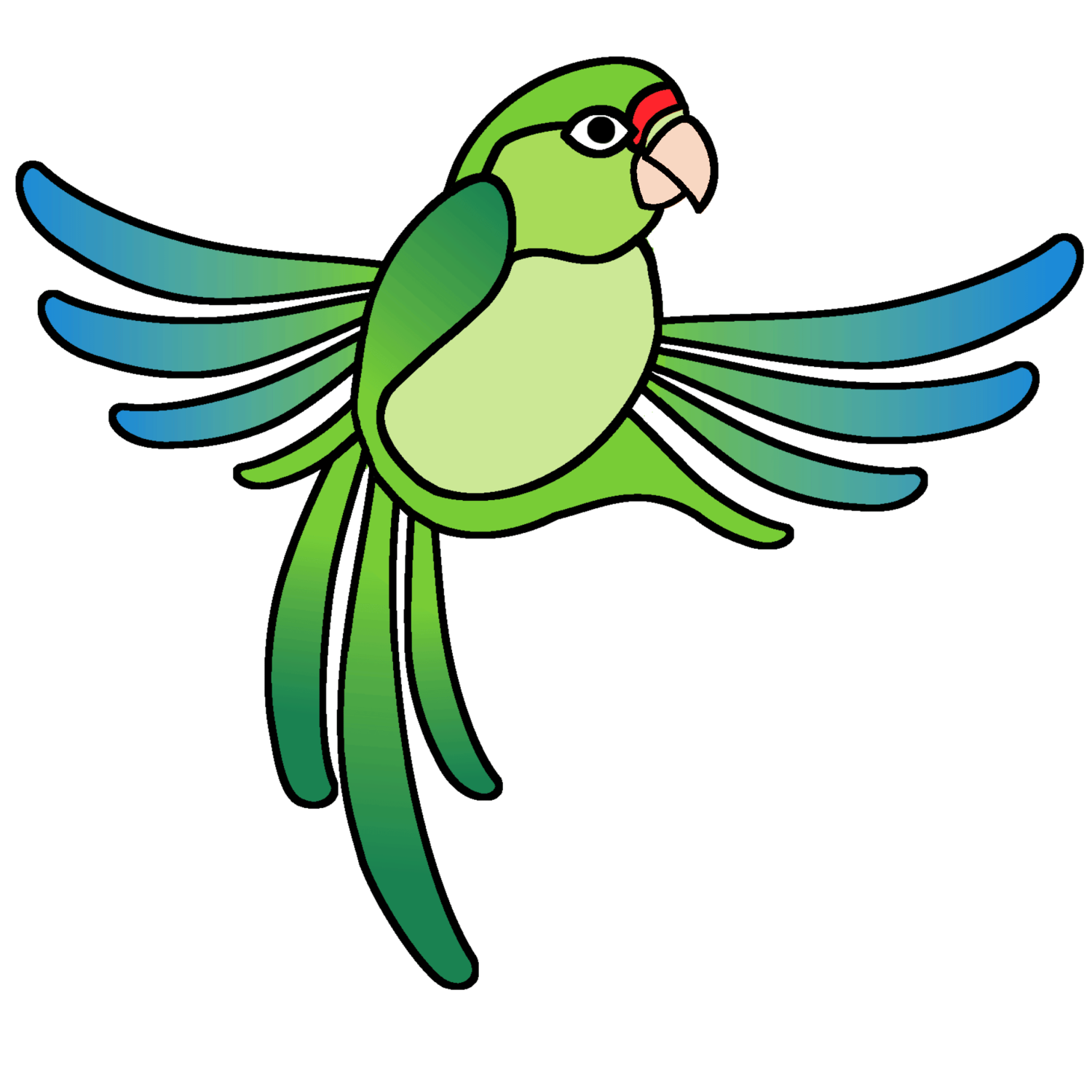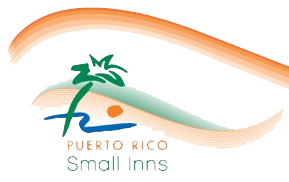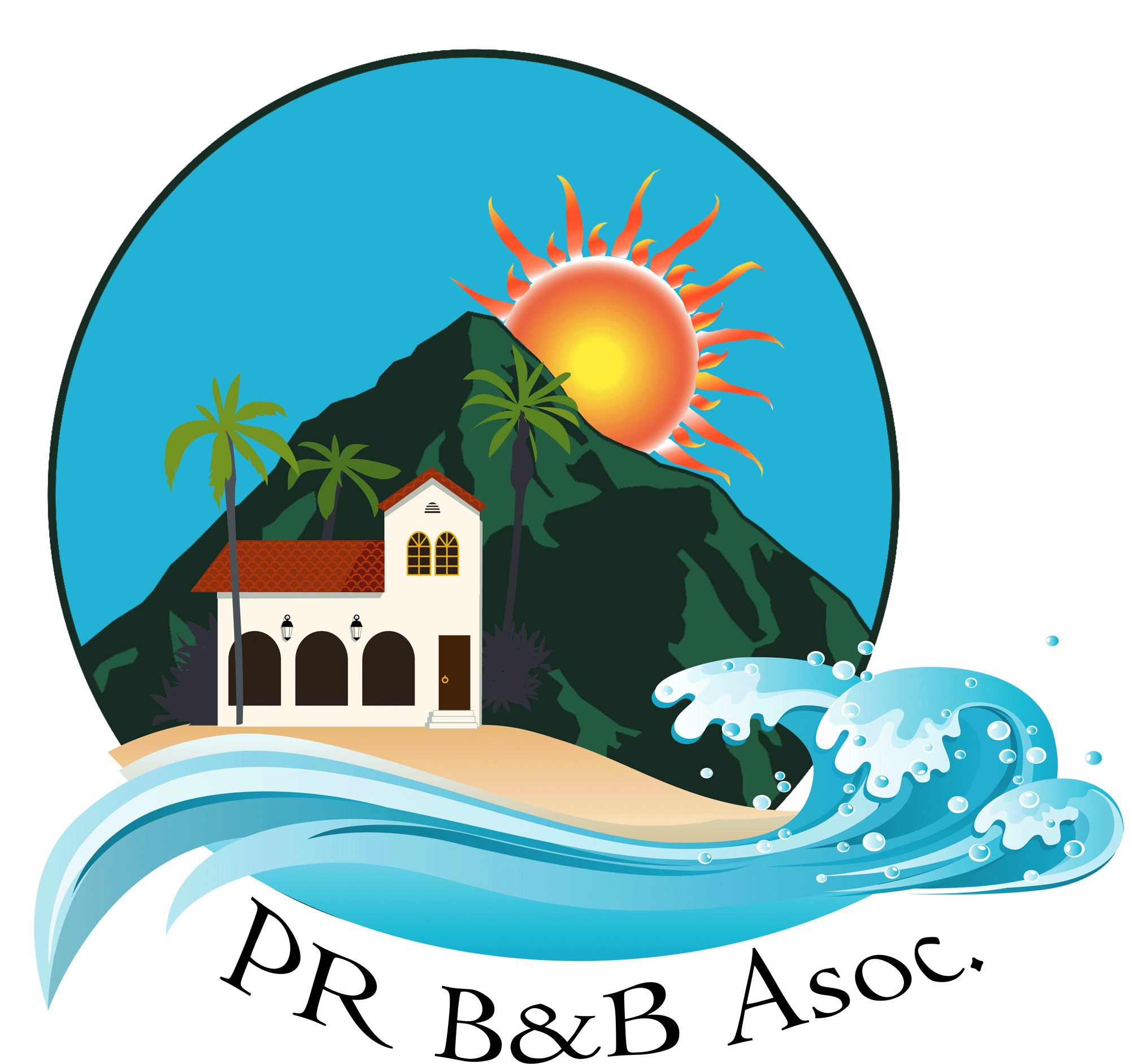Six young scientists showed up at our door, sweaty but cheery, after running down 2.5 kilometers from the nearby El Verde Field Station and then up our steep driveway that climbs over 172 meters in just 1.5 kilometers. The group, lead by the Luquillo Forest Dynamics Plot (LFDP) Project Manager Seth Rifkin, came to trek a few miles further into the rainforest to bestow their knowledge upon our private Lost Machete Trail hike. The researchers had been working at El Verde for sometime between a few weeks to a few months, and Rifkin has been there for eight years, so they know more about the trees in El Yunque than the average person knows about the far fewer species found in our North American forests.
Rifkin manages a 16-hectare study plot next to El Verde Field Station, which lies at about 350 meters elevation. The plot spans out over both forest that was never selectively cut as well as forest that had been used for agriculture until the mid-20th century, Rifkin said. The LFDP was established in 1990 to observe how the rainforest recovers from hurricane damage, specifically in the aftermath of hurricane Hugo in 1989. Every five years around 25 researchers, most commonly recent college graduates, live at the field station for anywhere from a few months to a year, working to collect data for the tree census. Their work entails hiking to various quadrants, through mud and streams and over steep hills, and measuring every tree stem at 130 centimeters from the ground that is more that one centimeter in diameter at that point and record the species and physical damage to the crown or trunk.
The data collected at the LFDP contributes to the Smithsonian’s Center for Tropical Forest Science - Forest Global Earth Observatory (CTFS - ForestGEO)—a global network of over 60 forest research plots across the Americas, Africa, Asia, and Europe reserved for the study of tropical and temperate forest function and diversity. CTFS-ForestGEO monitors the growth and survival of approximately 6 million trees and 10,000 species, in plots around the world that are varying sizes but use the same research methodology. The LFDP is affiliated with the University of Puerto Rico and funded by the National Science Foundation’s Long Term Ecological Research Program. The data collected by the El Verde crew goes into the ForestGEO database and is analyzed for factors that contribute to tree species community dynamics, how anthropogenic climate change is changing those dynamics, and other threats to species diversity.
“As the project was developing, they came to the realization that there was more of an effect of past human land-use patterns on the tree species composition then even the hurricane damage,” Rifkin said. “There is also an additive effect of those two types of disturbance to the tree species composition.”
The ForestGEO timeline is essentially indefinite, Rifkin said, as long as there are still forests to monitor. Luckily there are scientists who remain excited about measuring trees year after year, and were more than happy to explore the forests outside of their study plot.
The El Verde crew eagerly set off on our hike and returned a few hours later having only made it halfway to the natural pool at the summit because they ran out of sunlight. If you have ever hiked (or even stepped outside of your front door) with a biologist, you are privy to the fact that it takes significantly longer to go from point A to point B than it would with someone lacking training in ecology because a biologist will stop and gawk all eye-catching flora and fauna they pass. Given the biodiversity of El Yunque rainforest, our hike must have been a field day for the El Verde crew.
We sat down with Rifkin after the hike and he shared with us the knowledge that he and his colleagues noted about the trail; and it was a lot, because the tree species composition here is pretty similar to what the El Verde crew studies at the LFDP, Rifkin said. We also added some insight of our own and compiled a hike guidebook for our guests; here is a sneak peek...
Cecropia, known locally as Yagrumo hembra, is a genus consisting of 61 species; most common in El Yunque are Cecropia schreberiana (Pumpwood) and Cecropia peltata (Trumpet Tree or Snakewood). Cecropia are common in El Yunque because they are pioneer trees that establish abundantly after recurrent hurricane damage opens up the forest canopy and provides sun for the light-demanding tree. They are fast-growing, opportunistic trees that are one of the world's 100 most invasive alien species off the island, luckily they are native to Puerto Rico and are part of the rainforests’ strategy for hurricane recovery. Cecropia are easily distinguished by their large, deeply lobed leaf that looks like a hand and their white underbelly that shows when storm winds blow through the forest. The Taino word yagrumo means "two faced," which refers to the leaf faces’ mismatching colors. The leaves are steeped as tea used to treat kidney ailments and asthma, reduce pain and inflammation and kill bacteria and fungi.
Carrasco (Comocladia glabra) is a poisonous evergreen shrub in the same plant family as poison ivy, thus causing a similar skin reaction—and sometimes even more severe. It has a slender, unbranched trunk with large, lance-shaped spreading leaves, clusters of tiny dark red flowers and small reddish-black fruits. Its white sap turns black when exposed to air and is caustic, creating a painfully itchy rash that lasts several hours, sometimes days.
The Tree fern (Cyathea arborea) or Helecho arboreo in Spanish, has thrived since the era when dinosaurs roamed the earth. This perennial fern is successful in high-moisture environments and in colonizing landslides. Its crown has 10 or more fronds in the form of a fan, which each live for only 3 months but hold 3-5 billion spores for germination. When the tree fern is young, its fronds are rolled up. As they grow, each frond unrolls until it reaches its horizontal position.
Ficus Citrifolia, the Shortleaf or Strangler fig, is called Jagüey blanco in Spanish. The fig tree is an abundant tropical keystone species because figs are a major component of the diets of more species of animals than any other tropical perennial fruit, and because the hollow, lattice-like trunk provides a home for thousands of invertebrates, rodents, bats, birds and reptiles. Fig fruit turn from yellow to dark red when ripe, and are sweet and safe for human consumption. Fig begin their life as an epiphyte, a strategy which allows them to avoid competition for light by attacking palms and other trees, strangling them as it grows. The tiny epiphyte grows to an impressive height of 15 meters and covers a wide area due to their ability to drop aerial roots from branches and spread horizontally among the strangled parent tree. Ficus citrifolia is under strong selective pressure to flower and continuously produce fruit due to its mutualistic relationship with its specific species of pollinating fig wasp, which lays eggs in the fruit and acts as a pollinator for a specific species of fig. The fruit has a purgative effect on the digestive systems of animals that dine on it so its seeds are spread far and wide through dung.
Manilkara bidentata, Bulletwood or Ausubo, as it is most commonly called, is a large evergreen tree that was once one of the most important timber trees of Puerto Rico. In the Spanish colonial days it was cut down on the coast and its strong, highly valued wood was floated over to San Juan, where it was used as ceiling beams in many buildings still standing today in Old San Juan. Oxen also pulled carts laden with Ausubo beams over land to San Juan from El Yunque. Because it is extremely tolerant of shade, Ausubo is common in the lower elevations of El Yunque, where it can live up to 400 years. The tree is also tapped for its milky latex sap, the source of balata gum, which is sometimes used in products such as golf balls.
Prestoea acuminata var. Montana is the Sierra Palm, or Palma sierra. It is the most common tree in this elevation of El Yunque, succeeding where most trees cannot. Its distinguishing above-ground roots capture enough oxygen so that it can grow well in waterlogged soils. Thus, Sierra palms blanket steep slopes, unstable soils and high elevation streambeds. Very few other species of palm are found in the rainforest. Importantly, its fruit is the beloved Puerto Rican Parrot’s favorite food.
Pterocarpus officinalis is called either Palo de pollo or Sangre de drago. The most distinguishing feature of this impressive tree is its narrow, long buttresses (above-ground roots) that make the tree reminiscent of a palo de pollo—translated as “chicken stick” or “chicken foot.” The Palo de pollo buttresses, up to 4.5 meters tall, absorb oxygen in oxygen-poor soils such as in swamps and along streams. This evergreen tree grows, often twisted and fluted, to about 20-30 meters tall. When the bark is wounded it yields a copious amount of red sap that hardens into crimson “tears.” This is collected as sangre de drago, “dragon’s blood.” The sap is astringent and haemostatic—having the capability to close wounds and stop blood flow—and is used in the treatment of diarrhea, mouth sores and thrush. The tree has a large nitrogen-fixing capacity and provides vast shade for other flora such as coffee plants—both reasons that it survived subsistence coffee farmers years ago that cut down neighboring tropical hardwood trees to use as charcoal for the sugar cane refineries.
Swietenia macrophylla is called either Honduran or Big-leaf mahogany (Caoba de Honduras or de Hoja grande). Our mahogany trees were planted over 30 years ago to test a new design for mahogany plantations. Instead of initially clear cutting the forest plot with traditional slash and burn procedures, forestry scientists planted many rows of mahogany and applied defoliant spray during their early growth to discourage competition for sunlight from nearby trees. This species of mahogany is fast growing but not as dense or elegantly figured as the native mahogany, Swietenia mahagoni. Once mature, the seed of mahogany splits and falls to the ground as a beautiful flower-shaped woody structure.
Syzygium jambos is the Rose Apple. This tree is native to Southeast Asia and moderately invasive in Puerto Rico. The fruit is edible and has a strong floral aroma, earning its name of "rose apple" or pomarrosa. At the Rainforest Inn, we occasionally serve freshly picked pomarrosas from our trees with our breakfasts. The fruit is rich in vitamin C and can be eaten raw or used in various regional recipes. The wood is dense and is therefore a source of charcoal. Additionally, the tree contains various tannins that may have antimicrobial applications and some parts of the tree are used in regional traditional medicine.
These trees are tagged along the Lost Machete Trail to help our guests better understand and appreciate the rainforest in which they are vacationing. Our new hike guidebook is a part of our ecological signage around the inn that has helped us earn accreditation by the Puerto Rico Tourism Company’s Sustainable Tourism Facilities Program. We are excited to share the secrets of the Lost Machete Trail...and there are even more to come once the El Verde scientists return for part two of their quest to the beautiful private pool above the 70-foot waterfall at the trail’s end!













